PDF chapter test TRY NOW
Based on the source of origin, the acid is classified as
- Organic acid
- Inorganic or mineral acid
Organic acid
Acids obtained from plants and animals (living things) are known as organic acids also called carboxy acids. These are generally known as weak acids.
Example: Acetic acid, formic acid, citric acid, lactic acid, malic acid, tannic acid.
S.No. | Acids | Image | Sources |
1. | Malic acid |  | Apple, tomatoes, banana. |
2. | Citric acid | 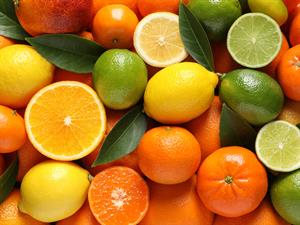 | Citrus fruits (oranges, lemons, grapefruits, pomelo, etc.) |
3. | Tartaric acid | 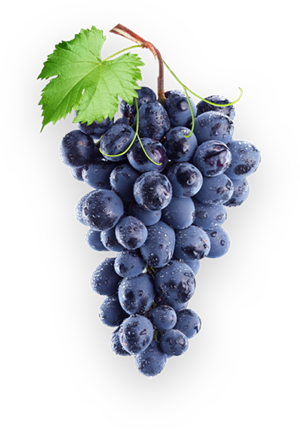 | Grapes |
4. | Oxalic acid | 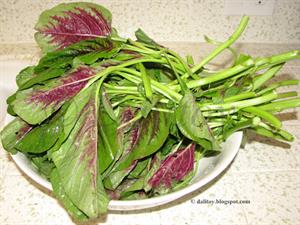 | Spinach, beets, beet greens, etc |
5. | Acetic acid |  | Vinegar |
6. | Lactic acid | 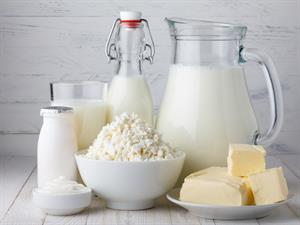 | Curd, buttermilk, cheese, yoghurt, etc. |
7. | Ascorbic acid | 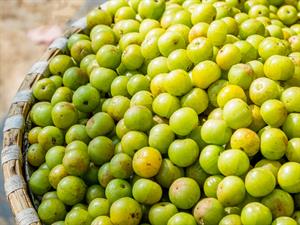 | Amla, citrus fruits, tropical fruits (pomegranates, mangoes, papayas, bananas, pineapples, guavas, kiwis, dates), etc. |
8. | Tannic acid |  | Tea, coffee, wine, strawberries, blueberries, etc. |
9. | Hydrochloric acid | 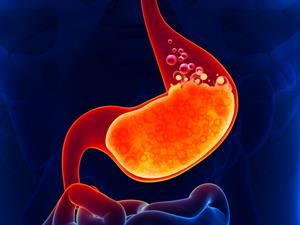 | Stomach juice |
10. | Formic acid | 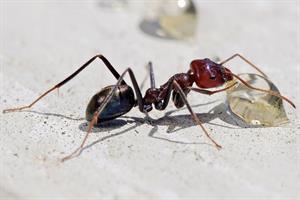 | Ant, Bee |
Inorganic acid
Acids prepared from rocks and minerals are inorganic acids or mineral acids. These are manufactured artificially in industries.
Example: Nitric acid (HNO_3), hydrochloric acid (HCl), sulphuric acid (H_2SO_4).
Strong acids can damage things such as human skin, clothing and paper.
There are some other classifications of acids based on the following factors:
- Basicity
- Ionisation
- Concentration
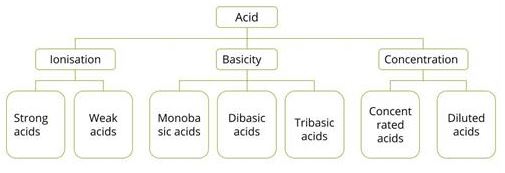
Classification of acid
You will learn about them in your higher classes.
Do you know?
One or more hydrogens are present in all acids. However, not all hydrogen-based compounds are acids. Hydrogen is found in various substances, including methane (CH_4) and ammonia (NH_3). However, in an aqueous solution, they do not contain H^+ ions.
Important!
While mixing any concentrated inorganic acid with water, extreme caution is needed. Since the acid produces a lot of heat, it must be added slowly and carefully to the water with constant stirring. If acid is mixed with water, the mixture splashes out of the bottle, and it may cause burns.
Reference:
http://3.bp.blogspot.com/-vW7hLdCHVRg/TlbhT8VHDRI/AAAAAAAABZU/9pKzzjH-m3g/s460/RedSpinach.JPG
https://upload.wikimedia.org/wikipedia/commons/thumb/e/eb/Meat_eater_ant_feeding_on_honey.jpg/1200px-Meat_eater_ant_feeding_on_honey.jpg
https://banner.holidaypng.com/20191016/slz/grape-fruit-grapevine-family-for-thanksgiving-5da67559b8d805.42214291.png
